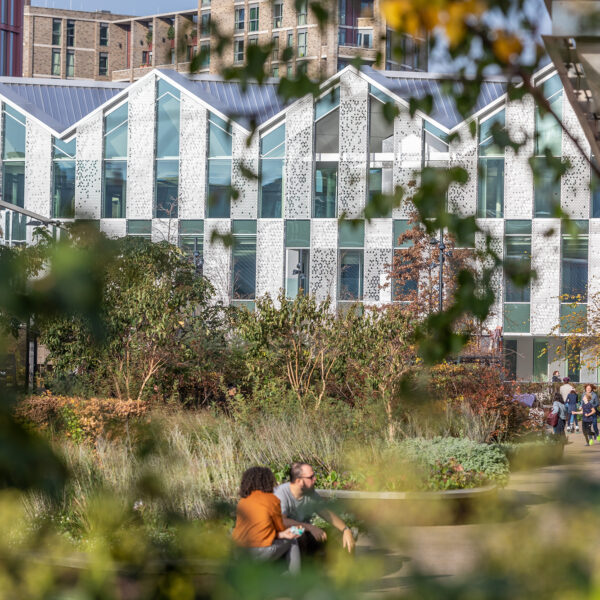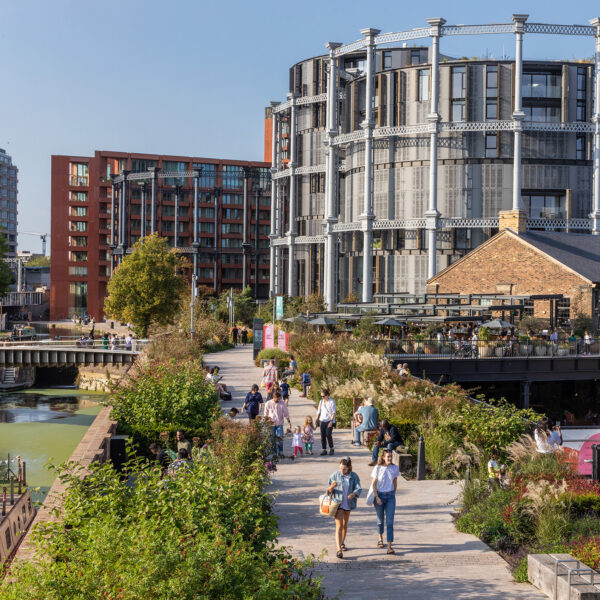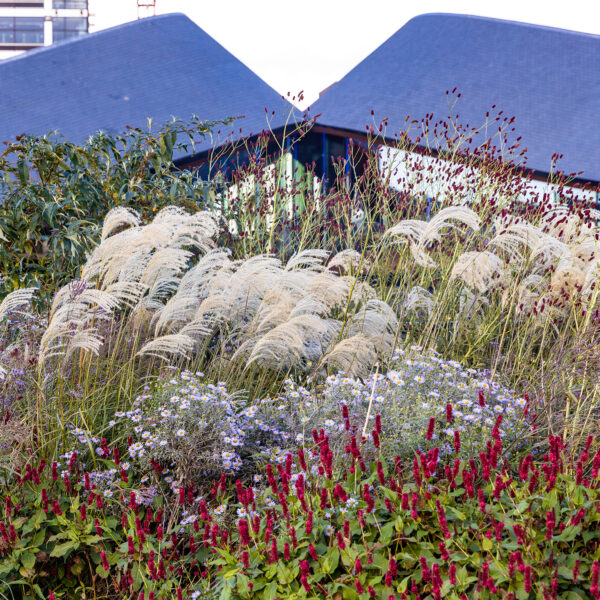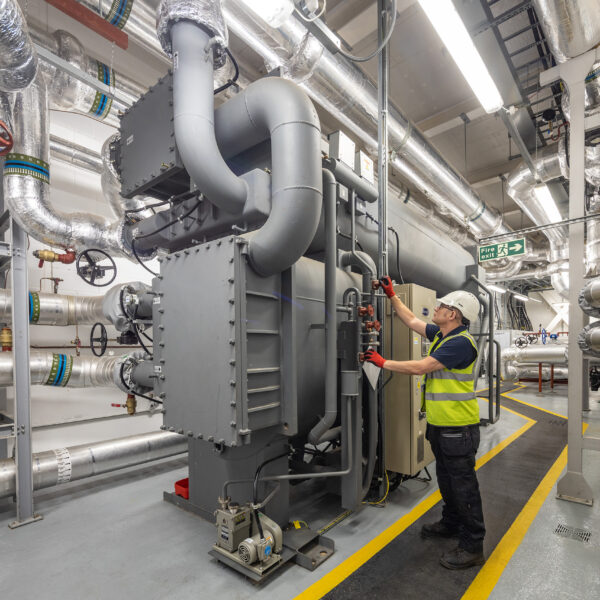The buildings at King’s Cross are designed with environmental sustainability at their core
King’s Cross has signed the World Green Building Council’s Net Zero Carbon Buildings Commitment, which is a ‘front-runner’ to the UN’s global Race to Zero campaign, the world’s largest commitment from private and public organisations to fight for climate action.
Sustainable by design
The latest technology and innovation has been used in the design of the buildings at King’s Cross – this has been the case from the outset of the project. Not only does this minimise environmental impact and reduce running costs but it also creates a better, healthier environment for everyone who lives and works here.
Orientation, solar shading, the use of thermal mass for cooling and passive ventilation systems help make the buildings extremely energy efficient. Where possible, roofs are planted to encourage biodiversity and wildlife.
Sustainable in use
We’re working closely with our occupiers to ensure that all buildings deploy the latest energy and water-saving technologies and operate as efficiently as possible. We have invested in an upgrade of each of our office building’s metering and Building Management Systems. This will network each building to the cloud to allow remote management. Smart analytics will allow us to collaborate with tenants to optimally manage energy consumption within each of the buildings.
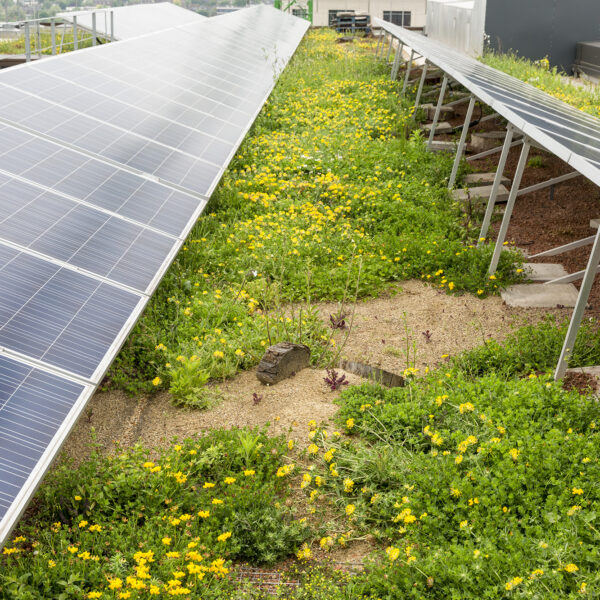

We’re aiming high
Already, seven of the completed office buildings at King’s Cross have achieved a BREEAM “Outstanding” rating. BREEAM is the world’s most widely used environmental assessment method and “Outstanding” is the highest global sustainability rating for buildings.
One of the most recent examples of sustainability excellence is the King’s Cross Sports Hall. This ‘near zero’ timber-framed building, designed by Bennetts Associates has achieved a LETI embodied carbon rating of “B”. This means that the project is meeting the RIBA 2030 Challenge ten years ahead of schedule. Likewise, the upfront embodied carbon at 11-21 Canal Reach is around 40% lower than “business as usual”. You can read more about these buildings and how they’re helping us on our journey to zero carbon here.
What is BREEAM?
BREEAM is the world’s most widely used environmental assessment method. The measure is used to judge the environmental performance of office buildings and helps construction professionals understand and lessen the environmental impacts of the buildings they design and build. The assessment scores buildings against a set of criteria giving a rating of pass, good, very good, excellent or outstanding.
The planning agreements for King’s Cross require that all office buildings are designed to a BREEAM rating of “Very Good”. We’re aiming above this – with a goal of “Excellent” as the minimum for all new buildings, and “Outstanding” as the goal.
The headquarter building for the London Borough of Camden, Five Pancras Square, was one of London’s first BREEAM “Outstanding” buildings. In fact, to date, all seven completed office buildings have achieved a BREEAM Outstanding rating with three more in construction and expected.
What we can’t improve, we offset
Since the outset of the project, we’ve been focusing on the sustainability and energy efficiency of the buildings.
But there are some emissions that cannot be avoided, namely our historic carbon emissions. Historic emissions include the carbon previously used in operating our buildings as well as the embodied carbon which came from the construction of the buildings.
For these emissions, we offset through best-in-class, verified carbon credit projects. You can read about the projects here.

Powered by green gas and electricity
Buildings at King’s Cross are connected to the on-site Energy Centre and district energy network. The centre is powered entirely by renewable energy and it provides heat, hot water and cooling via Combined Heat and Power (CHP) engines. This is a very efficient way to heat the buildings and it means that there is no need for conventional boilers in the buildings themselves.
You can learn more about the King’s Cross Energy Centre and district energy network here.
Eliminating waste
At King’s Cross, we send zero waste to landfill. Waste from the public areas and the buildings is channelled through multiple waste streams and we work closely with our office and retail businesses to drive down the amount of waste produced and reuse or repurpose the waste we do have.
For example, food waste is recycled by anaerobic digestion and used in Pro-Grow which in turn is used to fertilize the soil in the neighbourhood and coffee grounds are recycled into fuel logs.
We’re also looking to enable a circular economy with projects like Super Nature. This initiative uses art installations and the cultural programme at King’s Cross as a way to facilitate conversations and collaborations around circular design and most importantly, to bring about change.

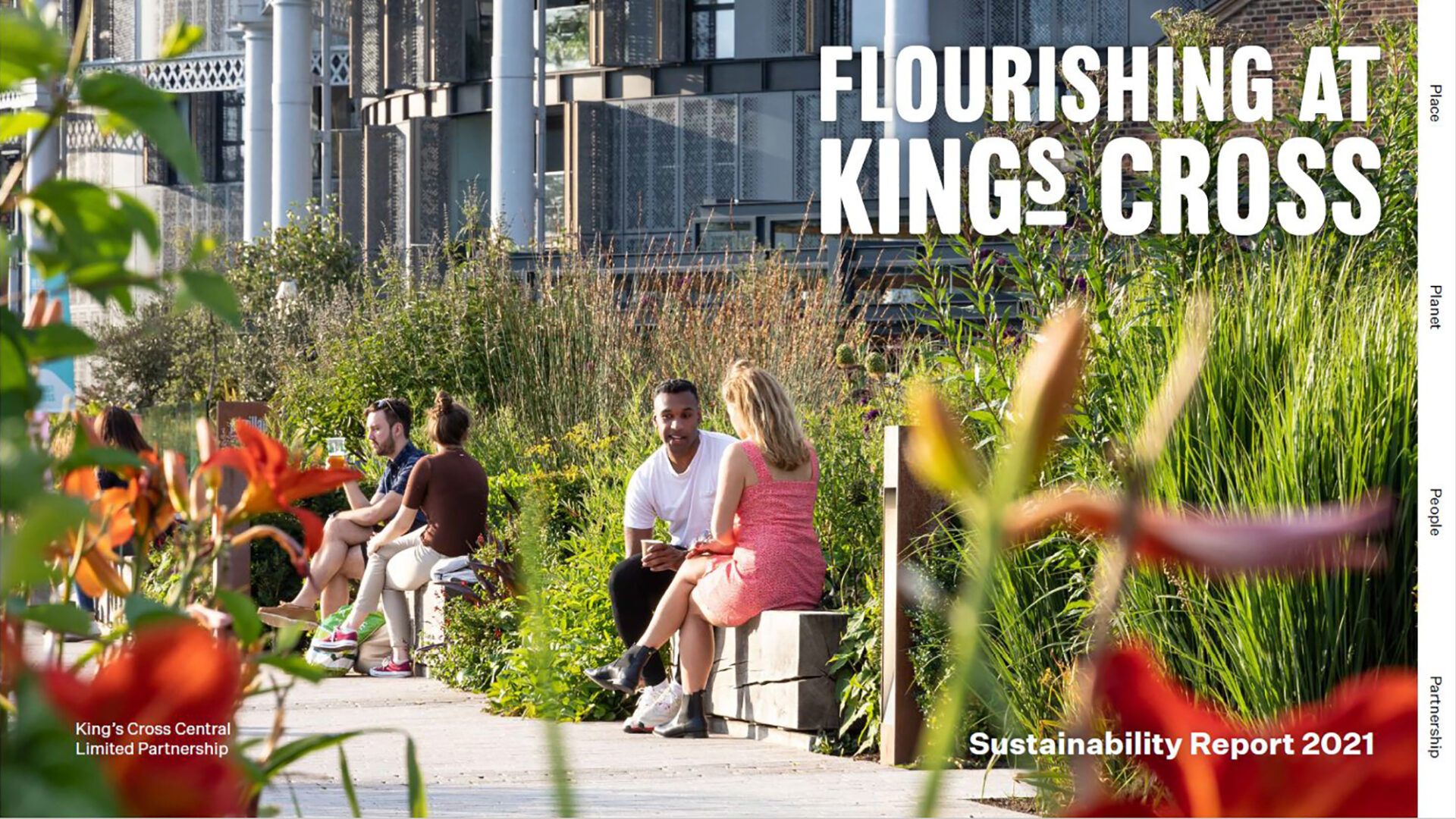
The King’s Cross Environmental and Social Sustainability Report
We have defined a vision for King’s Cross as a place where people and the planet can flourish together. This report sets out our ambitious environmental, social and governance targets and outlines what we’re doing to meet them.

